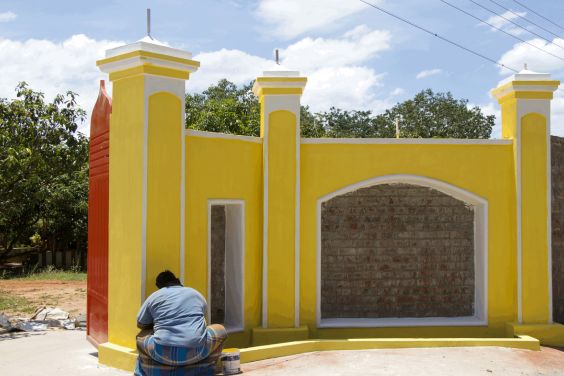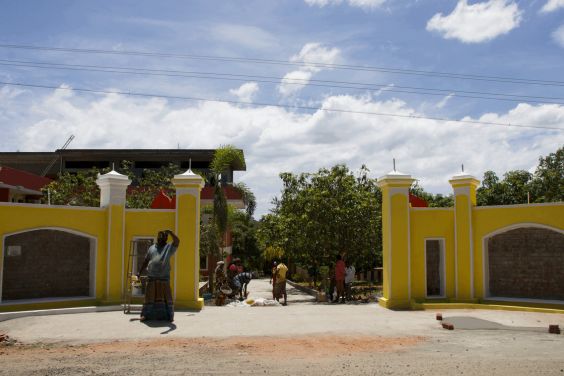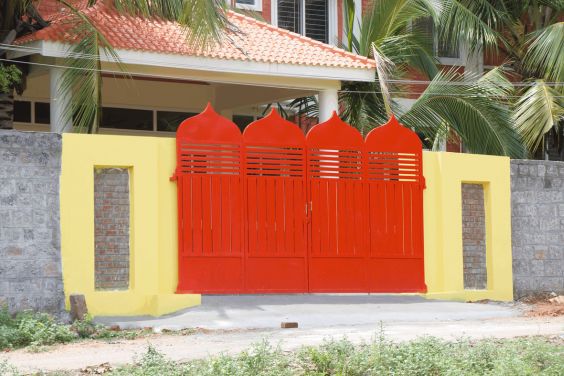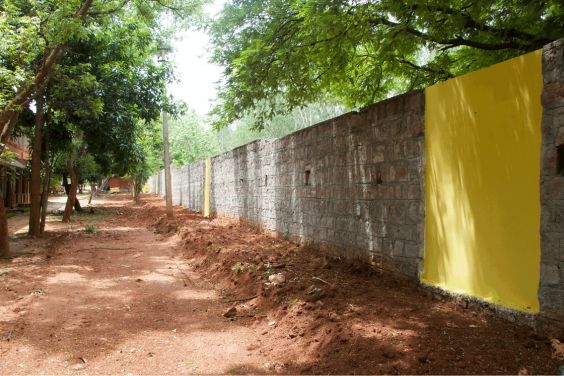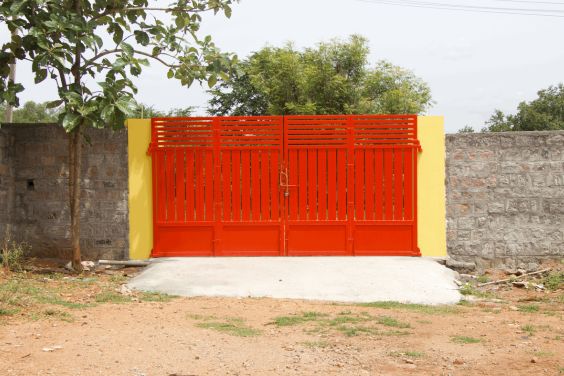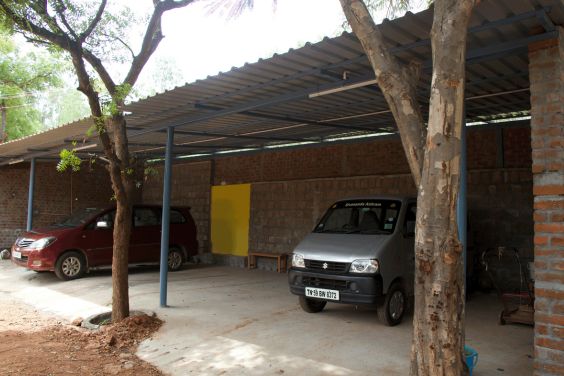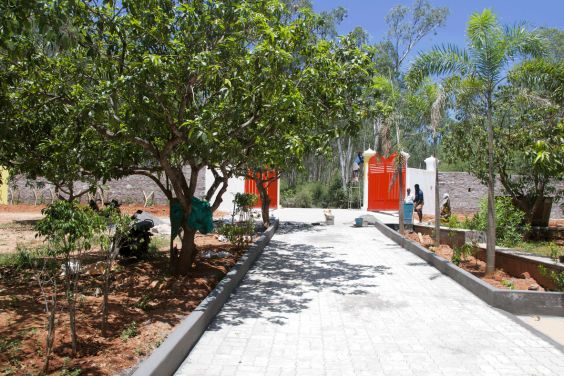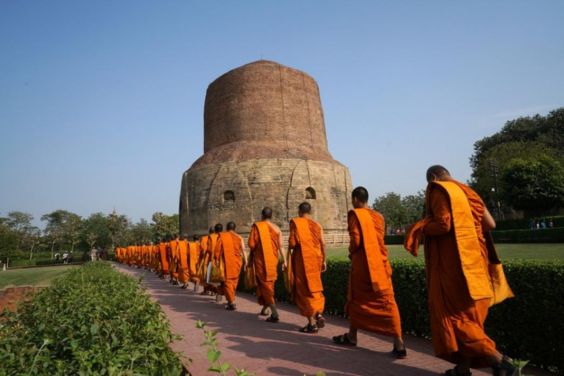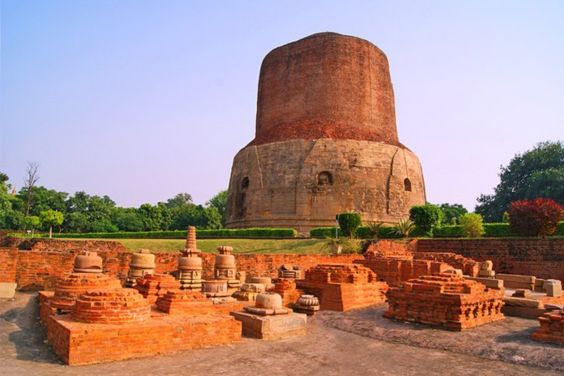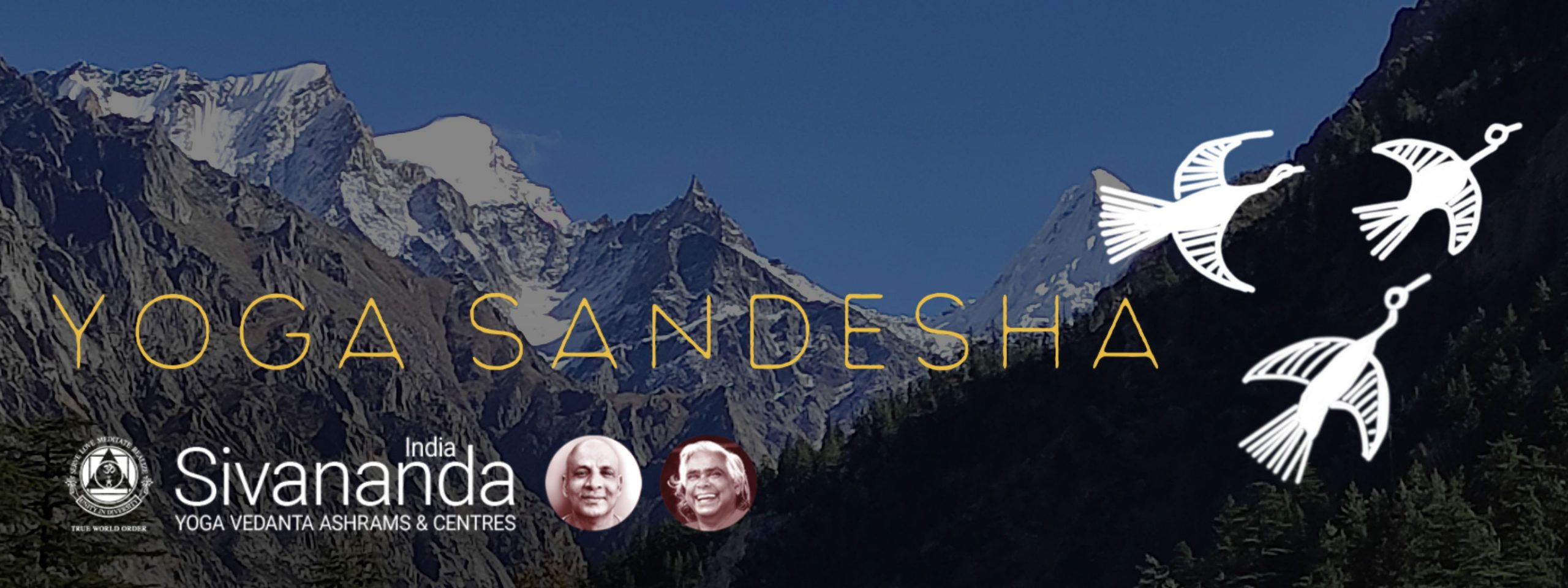
August 2023 | Ahimsa
Om Namah Sivaya
Blessed Self,
The core strength of the organisation that Swami Vishnudevanandaji created is discipline, not an easy task for our rebellious minds and the mundane life we live in. When seekers visit the ashrams and centres that Swamiji created as spiritual homes, people fall in love with the discipline and when they go back home they often miss that the most.
The following excerpt about Master Swami Sivananda’s life is quite inspiring: “The Master practiced intense spiritual discipline for years altogether. He, who in later life impressed upon his devotees that spiritual discipline was not military discipline, but essentially self-discipline, had trained himself in a most systematic manner.” That same discipline was evident all through Swamiji’s life and teachings, and he passed that on to his disciples and students.
Realised saints often crave for seclusion, even as they strive to impart what they have learned to students and show how to be healthy, happy, and peaceful. Swamiji always wanted to stop what he was doing and go to the Himalayas to stay in seclusion, meditating and contemplating, however, his disciples and students were so attached to him that they never let him.
When we consider why Swamiji created so many ashrams and spiritual homes, what happened in Master Sivananda’s own life gives us an idea. Even after God Realization, the Master did not want to build an ashram of his own. To spiritual aspirants who sought his guidance at that time he said, “I am only a common Sadhu. I may not be able to help you much. Further, I do not make disciples. I can be your sincere friend till the end of my life. I do not like to keep aspirants by my side for a long time. I give lessons for a couple of months and then ask my students to meditate in some solitary place in Kashmir or Uttarakhand.”
So let’s take inspiration from the above and see how Master and Swamiji impacted many lives, rather than simply judging them, and try to analyse from a practical perspective.
To conclude on a practical note, Madurai ashram’s compound wall came out very nicely and landscaping is taking shape, making it a real ashram with a proper structure. We are in the final setup of the Sivananda Free Rural Medical Hospital whose inauguration is set for the 24th August. We are expecting various dignitaries including the Health Minister for Tamil Nadu, the Excise Minister, the local MLA and the District Collector to join us in the much-awaited opening of the hospital to serve the local villages who are without access to medical and specialist attention.
May Master and Swamiji’s blessings be with you all.
Pranams,
Sivananda Yoga Vedanta Ashrams & Centres, India
“Photo by Dan Cassidy, “Shavings”
Over the next number of months we will focus on the Yamas and Niyamas, the ethical “restraints” and “observances” from Patanjali’s Raja Yoga system in our newsletter themes. These ethical considerations provide a framework for examining our own life, thoughts, and readiness for the deeper practices of yoga.
It is fascinating practice to delve a little deeper into the practice of Ahimsa, as there are multiple layers to our understanding of non-harming. It is not strictly understood as non-violence, as there are many ways that we can cause harm: physically, mentally, and verbally. We don’t only cause harm to others, but, sadly to ourselves as well. We should also not allow others to harm us. We can see that examining Ahimsa in the context of our relationships and daily activities can provide valuable insight into our mind and thoughts.
We hope you enjoy the newsletter and find some helpful points to reflect upon. As usual, please feel free to reach out to us with your thoughts and feedback: [email protected]
News Item: New Boundary Wall and Construction Projects at Madurai Ashram
We recently completed construction of a new boundary wall around the Madurai Ashram, complete with colourful gated entrances for the ashram and at the side of the ashram for the Sivananda Free Rural Medical Hospital and back gate entrance. A new car porch was constructed as well as a paved pathway to the new reception. All these changes make arrival at the ashram a more efficient and comfortable. We look forward to welcoming you soon!
Research/Links
“Yoga resets my inner peace barometer.” This study shows that yoga helps to improve one’s relationship to oneself through mindfulness and self-compassion, and to others through enhancing compassion and social connectedness, which may lead to enhanced health and wellbeing outcomes. Read more here:
https://www.sciencedirect.com/science/article/abs/pii/S0965229917304910
Spiritual Calendar
August 1 – Full Moon
August 11 – Ekadasi
August 16 – New Moon
August 20 – Ganesha Chathurthi
August 27 – Ekadasi
August 29 – Onam
August 31 – Full Moon
Upcoming Courses:
Learn, Practise & Grow with Us!
Teachers’ Training Course (TTC)
August 13 to September 9, Neyyar Dam, Kerala
September 10 to October 7, Netala, Himalayas
October 15 to November 11, Madurai, Tamil Nadu
November 12 to December 9, Neyyar Dam, Kerala
For more details, click here
Sadhana Intensive Course (SI)
October 15 to 28, Netala, Himalayas
For more details, click here
ONLINE Adapted Sivananda Yoga Course (ASYC)
September 11 to 18, 2023 on Zoom
For more details, click here
Courses in Thailand this fall at the Phu Chaisai Mountain Resort in Chiang Rai
Sadhana Intensive, September 16 to 30, 2023
Teachers’ Training Course, October 1 to 28, 2023
Advanced Teachers’ Training Course, October 1 to 28, 2023
Yoga Vacation, October 7 to 11 and October 21 to 25, 2023
For more details, click here
Teachings Excerpt:
Snake and the Frog by Swami Vishnudevananda
During my childhood, when I used to go to school, I had to walk through many paddy fields. There were water snakes en route and their staple diet was frogs from the rice fields. These water snakes were not poisonous. My idea about religion and God started by watching the drama between life and death that existed between the frog and the water snake. Almost every day I would see a water snake catching a frog, most generally from the hind portion of the frog’s body. Because the snake was unable to swallow the whole frog at once, the frog cried for several minutes in the mouth of the snake. The snake’s mouth was so small it couldn’t swallow all of the frog at once and the cry of the frog in its death pangs could be heard for miles. As I passed by, seeing the snake with the frog in its mouth, I would realise that the frog would be swallowed up in a few minutes.

To see that suffering was unbearable for my child’s mind. What should I do? Kill the snake and release the frog from the mouth of death, or carry on and mind my own business? I didn’t want to run away from the scene. But if I saved the frog I would deny the snake its meal. Saving the frog’s life would bring pain for the snake. I didn’t know what to do. I couldn’t understand why such cruelty existed. What was right? To kill the snake and let the frog go or allow the frog to be eaten? I asked several people, including my parents for the answer but no one could give me one. Several days passed by. Every time I saw a frog in a snake’s mouth I felt it very strongly in my heart. At last I decided I must evolve a philosophy of action. I decided to take a small stick and gently beat the snake until the frog was set free from the snake’s mouth. I was sorry for the snake too, so I wouldn’t kill the snake. Instead I would tell it, “When I am not here, you can catch a frog.” That was how I solved my first philosophical problem, the problem of life and death. I don’t know whether the snakes liked the solution or not, but that’s the way it ended. From then onwards a series of questions came into my mind. Though I was born into a religious household, I couldn’t accept anything without finding out my won answers. I could not blindly follow the rules and regulations. My understanding of religion was just like any other teenager’s. To many of us much of what we had been told by our parents made no sense. When I was in high school we had problems with the untouchables (the lowest group in the case system in India). We could not play with the untouchable children or even go near them. If we went near we had to take baths, for purification, or we would not get admission into our home. Since the incident with the frog, many injustices–untouchability, suffering, hunger, death–all created a stir in my mind.
Teaching & Practice Tips:
Pain vs. Sensation
As a beginner in yoga it can be difficult to read the internal signals and know whether we are feeling pain, or simply a new sensation in the body. As a yoga teacher it can be hard to know how to respond when a student says they are feeling “pain” in the practice. Let’s investigate!
Temple Showcase:
Dhamek Stupa, Sarnath
Dhamek Stupa is a place of deep devotion for the seekers of Lord Buddha. Located in Sarnath, thirteen kilometres away from Varanasi in Uttar Pradesh, the Dhamek Stupa marks an important pilgrimage site for Buddhists. Symbolically, it marks the spot where “the Rishi arrived”, meaning that important teachings on right action and non-violence originated here. Anyone visiting the holy city of Varanasi should take the time to also visit the Dhamek Stupa.
Built in 249 BCE under the reign of Emperor Ashoka, the Dhamek Stupa marks the spot where Lord Buddha attained enlightenment. It is here that he gave his first sermon to five Brahmin disciples revealing the eightfold path of Nirvana. It is famously known as the Dharma Chakra Pravartana or the Turning of the Wheel of Law. The teachings spread out from this place to the world through his disciples. Lord Buddha attained Nirvana in 544 BCE, and the land of the Stupa holds the holiness of Lord Buddha to date. His remains and ashes are said to have been cremated and buried under the Stupa.
The massive architecture of Dhamek Stupa is constructed in a cylindrical shape with bricks and stone and stands tall at a height of 43.6 meters covering a circular land space of 28 meters. The structure of the Stupa holds the impressions from the past with the basement surviving from Ashoka’s structure. The Stupa wall depicts beautifully carved images of florals, humans, and birds along with the Brahmi script. Impressions of the Ashokan dynasty show up prominently at the Stupa site with an Ashokan pillar standing right near the site.
Book Review: The Everyday Ayurveda Cookbook by Kate O’ Donnell
A Yogi seeks to align their yoga practice with the principles of Ayurveda. Written by a practising Yogi, the book guides one on a nature-aligned lifestyle you can follow along with your Yoga practice. The book has practical suggestions on simple lifestyle practices as well as recipes made using easily available ingredients. It delves into tips on aligning your Yoga practice with the right foods as per the season.
The book is based on the author’s own experience of adopting an Ayurvedic lifestyle to align with her Yoga practice. She has done a fabulous job of bringing Yoga & Ayurveda together as a lifestyle. The author has also brought to the limelight the ancient Indian culinary practices which is a challenge that each Yogi faces when trying to eat as per Ayurveda principles. The key highlight of the book is that it is written keeping in mind the life and busy lifestyle of an urban Yogi.
Some takeaways from the book:
- Integrating Ayurvedic Dinacharya or daily activities in daily routine
- Organizing the kitchen to cook as per Ayurvedic principles
- Eating as per the season of the produce.
- Travelling diet and lifestyle should be adapted to local produce
— Deepti Sehgal, Toronto
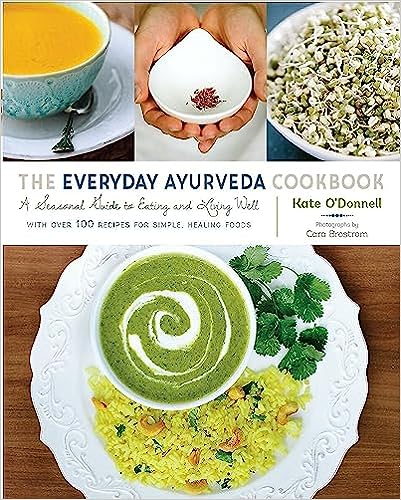
From the Community:
Podcast – I Meet Swami Sivananda of Rishikesh by Swami Nirmalananda Giri
(Abbot George Burke)
I met God in flesh both in America and India in the form of great yogis and devotees. Transformed by yoga and devotion they were embodiments of higher consciousness. One time my friend Hari Datta Vasudev was telling me about some of the holy ones he had met during his life. After one account he paused and then looked at me very intently. “They are the glory of India!” he told me. I agree and would like to tell you of the glory of India I encountered, the glory of God revealed in humanity.
The greatest of these was Swami Sivananda of Rishikesh, a holy city in the Himalayan foothills about twenty miles north of Hardwar, another most sacred place. Truly in a class by himself, Sivananda was the Lord of life and death, holding the keys of immortality. Although I could describe the other holy ones to some degree, Sivanandaji was beyond description or classification. He loved and we loved in return. I do not think even his closest disciples could say any more.
I met many great yogis in India but among them Sivananda was unique. The other yogis, great as they were, yet produced in me an external awareness, the awareness of their vibration, their very high energy. Now that awareness was certainly beneficial, but in a lesser degree, because it was outwardly turned and reality is inside. Sivananda was glorious and a wonder beyond telling, as was always evident. Yet, I found that the moment I entered his presence I experienced silence and became increasingly self-aware rather than drawn outward. I saw and admired him from the base of my true Self. There is a lot of talk about being centred, but Sivananda’s presence made me centred in the silent core of my being that is pure consciousness.
This podcast is the first of a series recounting my time with Swami Sivananda in the early 60’s, beginning with how I first heard Sivanandaji, and how I first met him.
Listen to the full podcast here:
https://ocoy.org/podcast-i-meet-swami-sivananda-of-rishikesh/
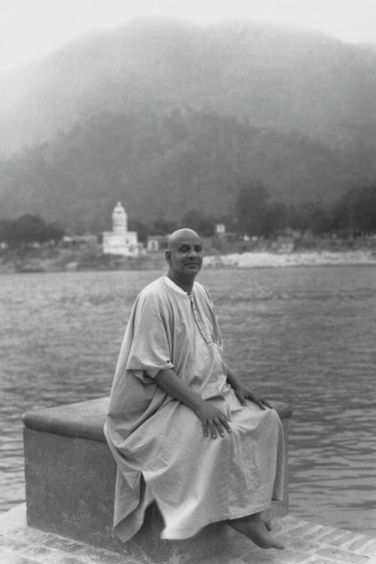
Nutritional Tips: Protein and Yoga Debate
Protein is the mighty nutrient that has gained much traction among fitness enthusiasts with the growth of the fitness industry. While gym goers and athletes swear by protein for their fitness needs, protein consumption among Yoga enthusiasts is still a debatable topic. With so many forms of Yoga, some of them being more physically intense, Yoga practitioners often look to protein to improve their flexibility, muscular strength and performance. However, there exists a section of Yoga practitioners that pay no heed to protein per se, while some others are very particular to supplement their practice with the right amount of protein. When we talk about protein in the Yoga world, it is not a one-size-fits-all theory.
Protein from a Traditional Perspective–Protein was discovered only a few hundred years back as an important nutrient to maintain muscular strength, besides performing other important functions for the body. However, Yoga has existed for ages and quite interestingly none of the ancient texts on Yoga or traditional Yoga gurus ever paid any specific importance to protein in a Yoga practice. This could also be because in classical Hatha Yoga, the focus has never been to strain the body and overuse the muscles to attain the perfect asanas, but to attain spiritual awareness using asanas as a tool to support the body for higher practices. Thus, the focus on diet in classical Hatha Yoga has always been on whole and natural foods as well as a balanced diet.
Within the Sivananda Yoga Vedanta Ashrams and Centres, where traditional Hatha Yoga is propagated, the recommended diet is a balanced combination of simple carbohydrates and proteins in the form of legumes combined with rice in main meals along with cooked vegetables and fruits. Beyond that, there is no specific protein inclusion considered in the diet in ancient Yoga gurukuls. However, as physical activity increases, the need for supporting the body with proteins may be higher.
Also, as Yoga travelled to the west, different Yoga forms emerged which may have helped Yoga to gain visibility more as an exercise than a spiritual practice. This is also when the focus on nutrition started to catch the interest of Yoga enthusiasts.
However, today Yoga has taken many forms and can be intense depending on the form one chooses to practice. Also, since our diet often lacks essential nutrients, it is recommended to have an optimal amount of protein even in a Yoga practice to not just support performance but also to maintain muscular strength for deepening the practice.
Why Incorporate Protein in Your Yoga Practice? Protein performs varied fundamental functions in the body including maintaining muscle mass, strengthening immune function, managing weight, and supporting the body’s energy levels. It is important to restore faster recovery from wear and tear caused by an intense Yoga practice that leads to muscle breakdown. Also, since in Yoga the Yogis are using their own body weight rather than lifting external weights, protein helps restore the energy consumed during practice.
Benefits of Protein in a Yoga Practice:
- Helps develop and restore muscular strength
- Increases muscle mass
- Supports the body for quicker healing
- Provides sustained energy and combats fatigue
- Supports the immune system for better functioning
- Increases the satiety level and helps control cravings
- Aids in quick healing from injuries
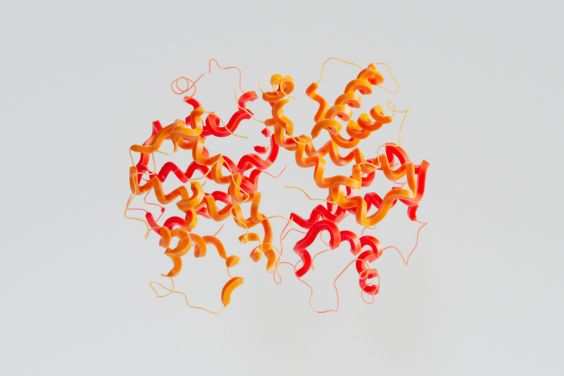
“Ahimsa is not mere negative non-injury. It is positive, cosmic love. It is the development of a mental attitude in which hatred is replaced by love. Ahimsa is true sacrifice.” -Swami Sivananda


